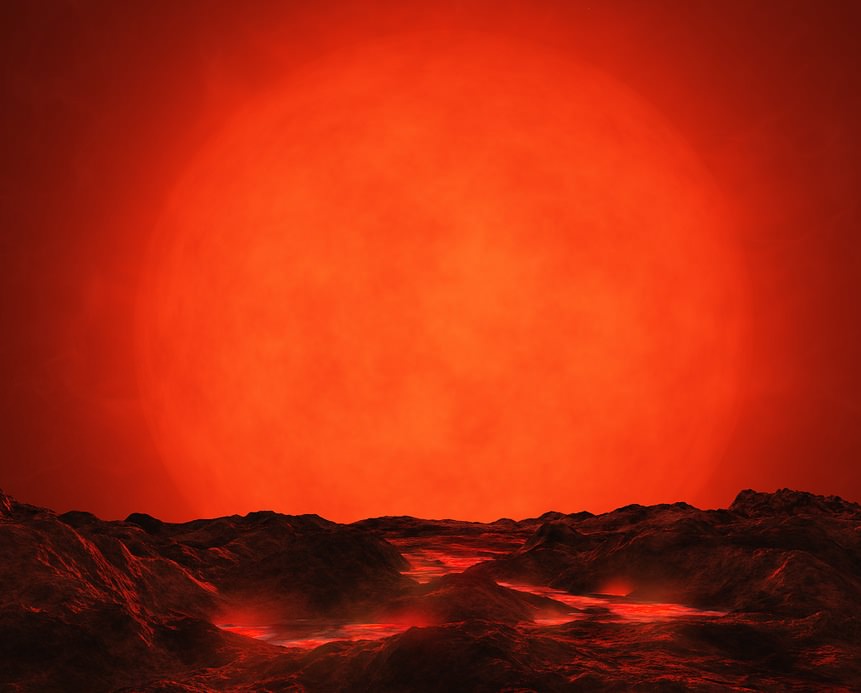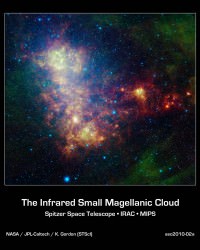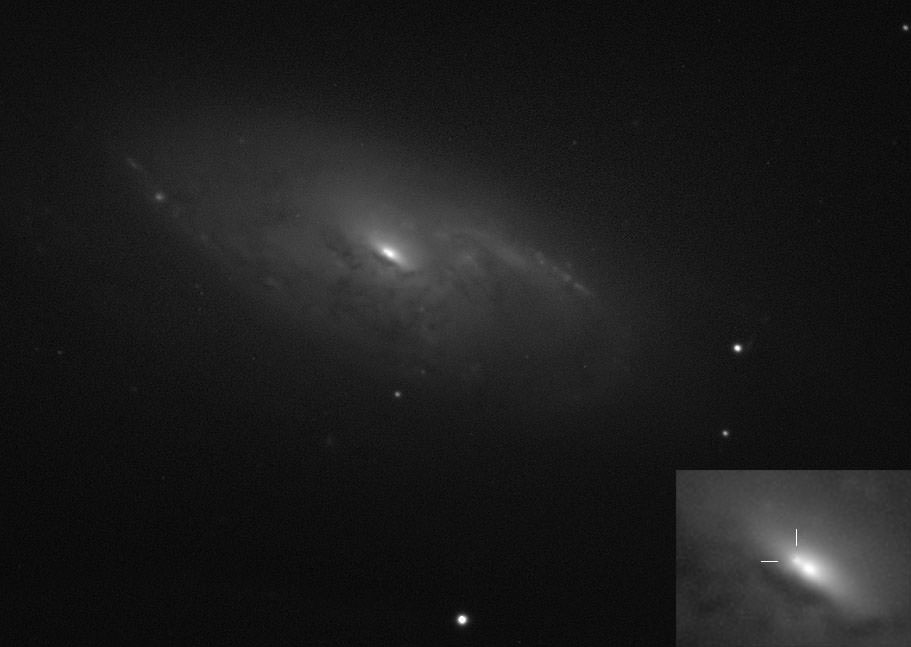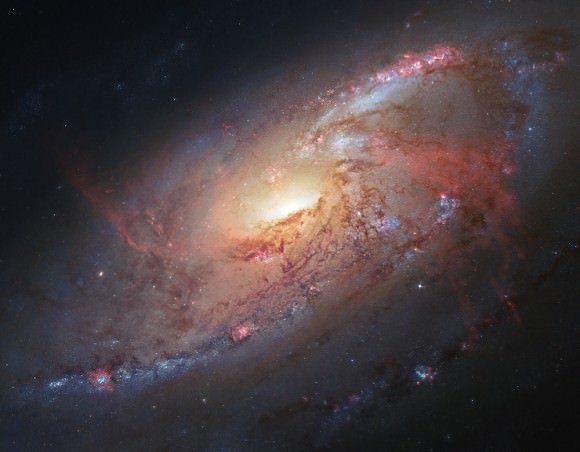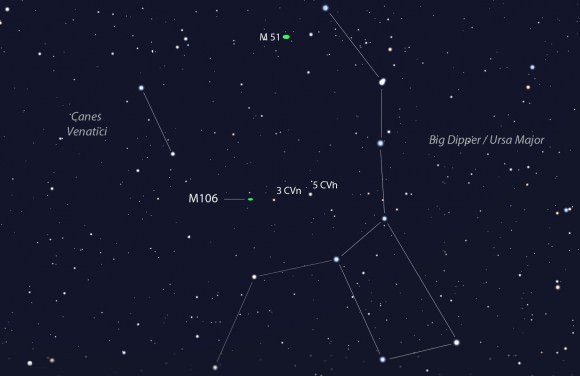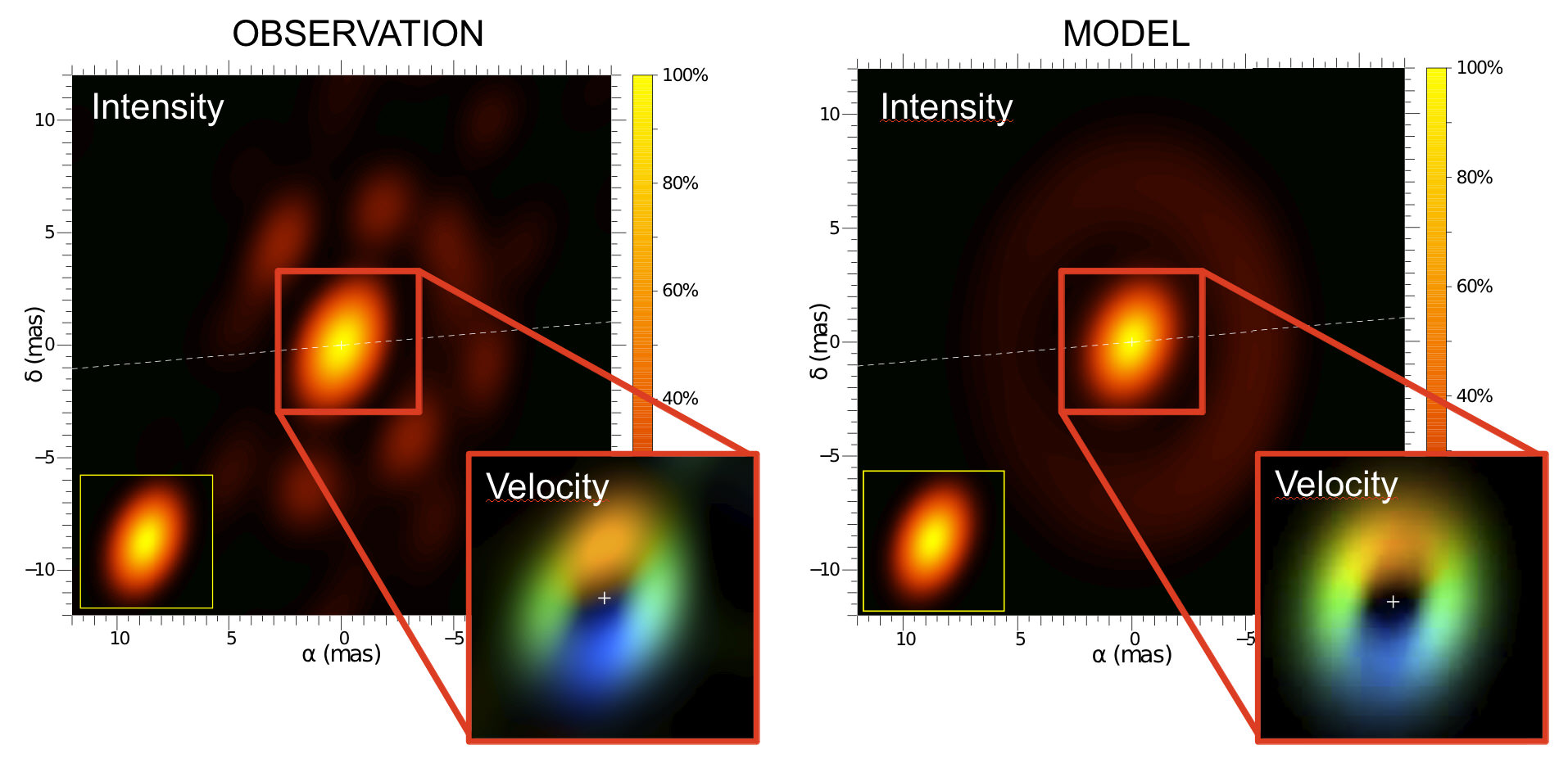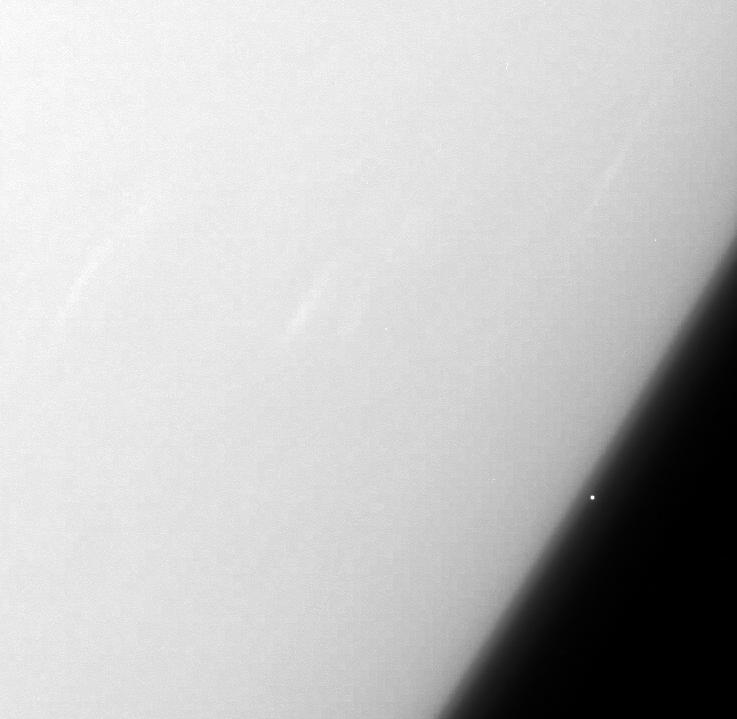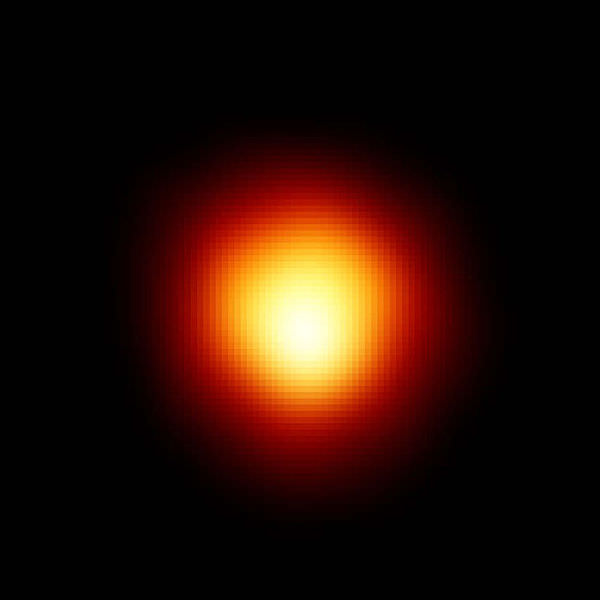I sat straight up in my seat when I learned of the discovery of a possible new supernova in the bright Virgo galaxy M61. Since bright usually means close, this newly exploding star may soon become visible in smaller telescopes. It was discovered at magnitude +13.6 on October 29th by Koichi Itagaki of Japan, a prolific hunter of supernovae with 94 discoveries or co-discoveries to his credit. Itagaki used a CCD camera and 19.6-inch (0.50-m) reflector to spy the new star within one of the galaxy’s prominent spiral arms. Comparison with earlier photos showed no star at the position. Itagaki also nabbed not one but two earlier supernovae in M61 in December 2008 and November 2006.
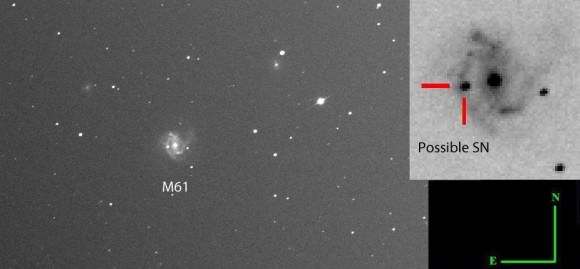
Overnight, Ernesto Guido and crew used a remote telescope in New Mexico to confirm the new object. We’re still waiting for a spectrum to be absolutely sure this is the real deal and also to determine what type of explosion occurred. In the meantime, it may well brighten in the coming mornings.
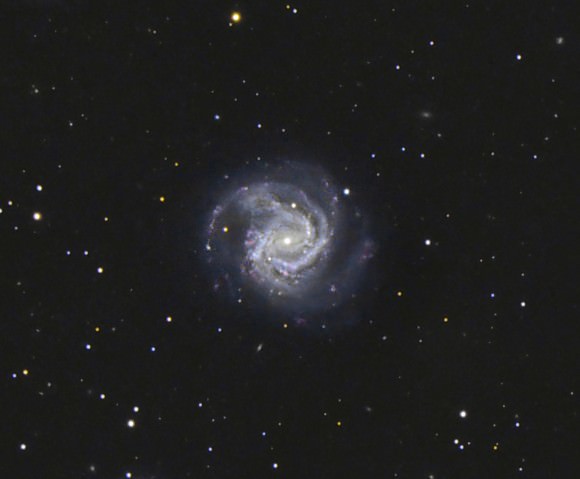
Supernovae are divided into two broad categories – Type Ia and Type II. In a Type Ia event, a planet-sized white dwarf star in close orbit around a normal star siphons off matter from its companion which builds up on the surface of the dwarf until it reaches critical mass at which point the core ignites and consumes itself and the star in one titanic nuclear fusion reaction. A cataclysmic explosion ensues as the star self-destructs in blaze of glory.
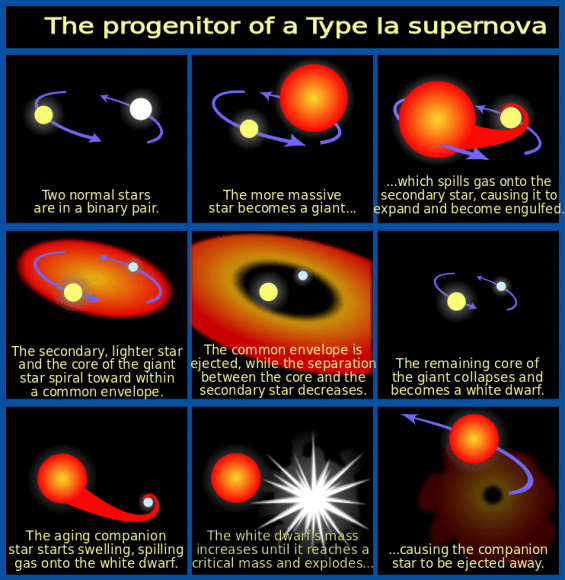
Type Ia explosions can become 5 billion times brighter than the Sun – the reason we can see them across so many light years – and eject matter into space at 5,000 – 20,000 km/second. Type II events mark the end of the life of a massive supergiant star. As these behemoths age, they burn by fusing heavier and heavier elements in their cores from hydrogen to carbon to silicon and finally, iron-nickel. Iron is inert and can’t be cooked or fused to create more energy. The star’s internal heat source, which has been staving back the force of gravity all these millions of years, shuts down. Gravity takes hold with a vengeance, the star quickly collapses then rebounds in a titanic explosion. Ka-boom!
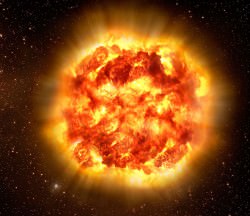
Like the Type Ia event, a Type II supernova grows to fantastic brilliance. Besides a legacy of radiant light, star debris, the creation of heavy elements like gold and lead, a Type II event will sometimes leave behind a tiny, city-sized, rapidly-spinning neutron star – the much compressed core of the original star – or even a black hole. So yes, life can continue for a giant star after a supernova event. But like seeing a former classmate at your 40th high school reunion, you’d hardly recognize it.
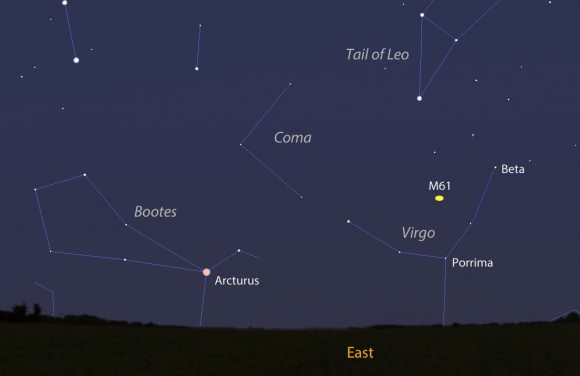
Are you itching to see this new supernova for yourself? Here are a couple maps to help you find it. M61 is located in the middle of the “Y” of Virgo not far from the familiar bright double star Gamma Virginis. From many locations, the galaxy climbs to 15-20° altitude in the east-southeast sky just before the start of dawn, just high enough for a good view. Once you find the galaxy, look for a small “star” superimposed on its eastern spiral arm as shown in the photo at the top of this article.
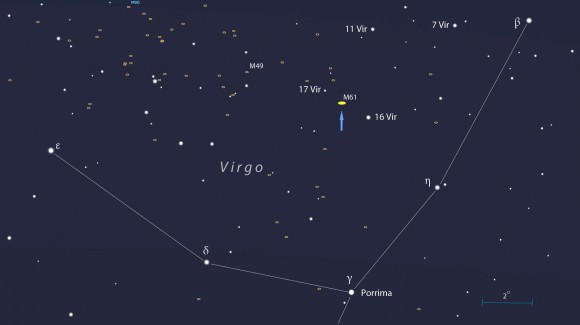
I’ll be out there with my scope watching and will report back once it’s established what type of supernova happens to be blowing up in our eyepieces. More information about the new object can be found anytime at David Bishop’s Latest Supernovae site. Good luck, clear skies!
** Update Nov. 1 : M61’s supernova now has a name and type! SN 2014dt is a Type Ia (exploding white dwarf) with some peculiarities in its spectrum. It’s also little brighter at magnitude +13.2.


